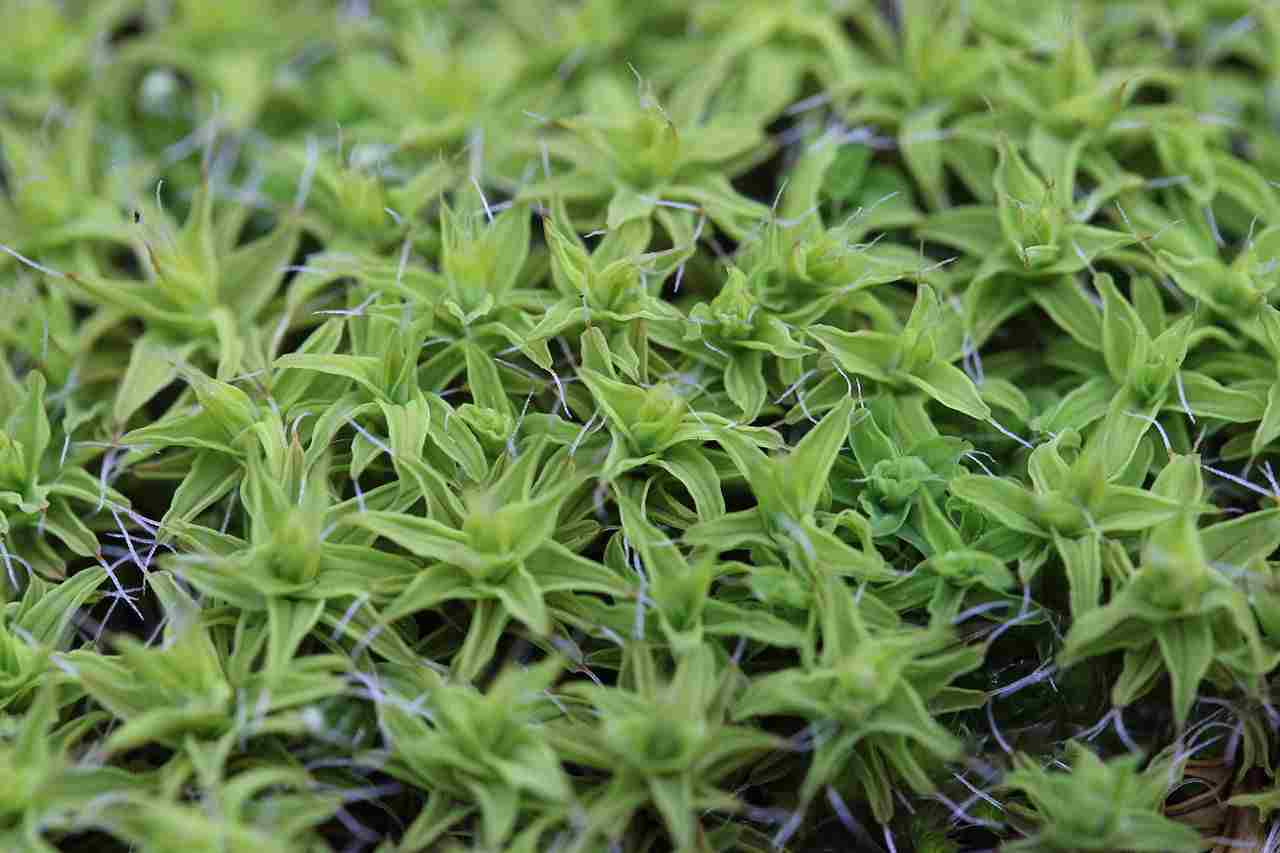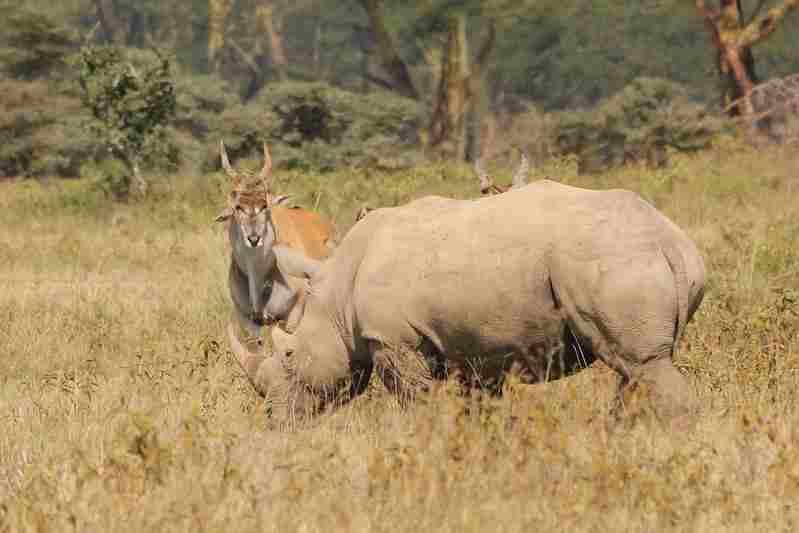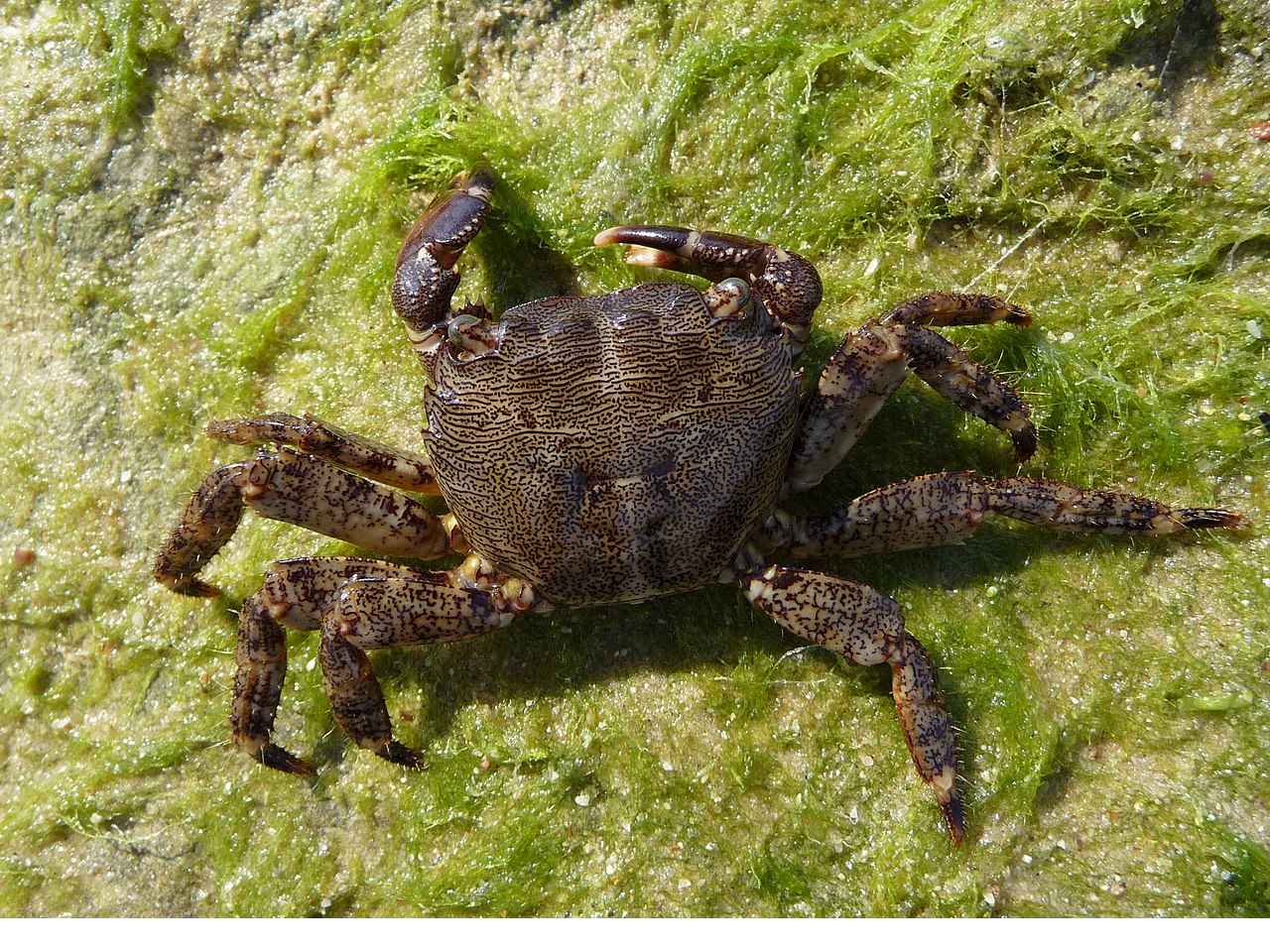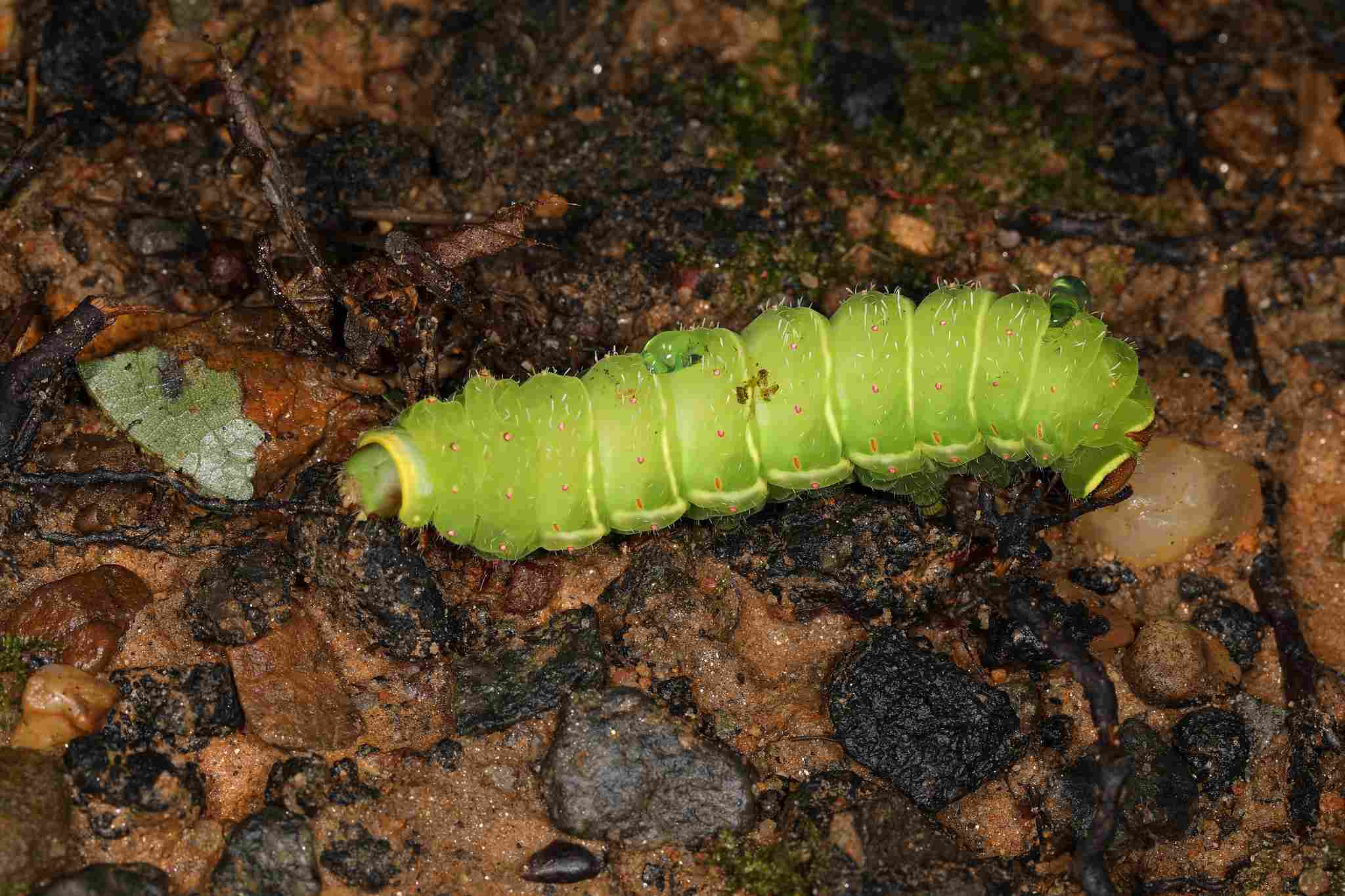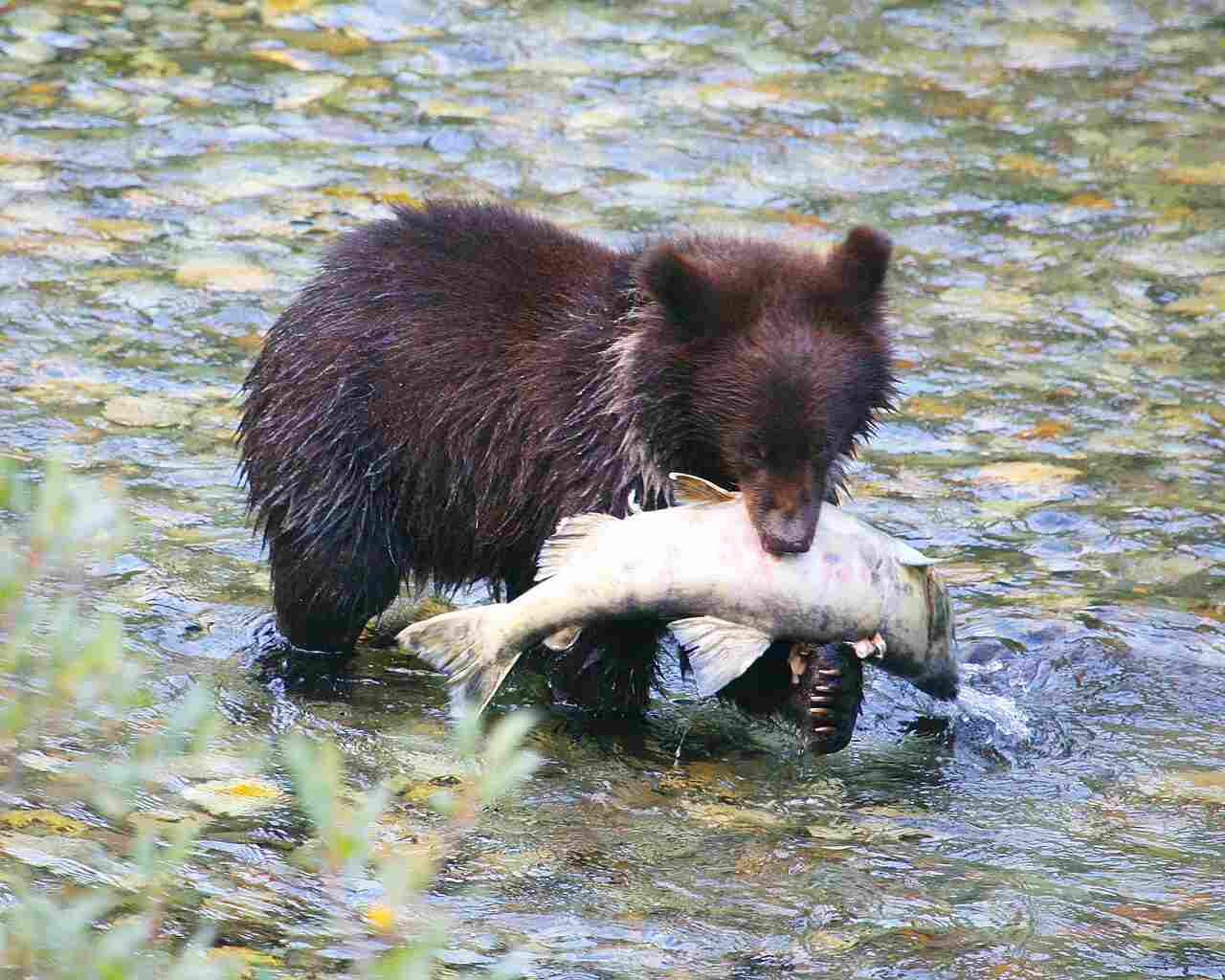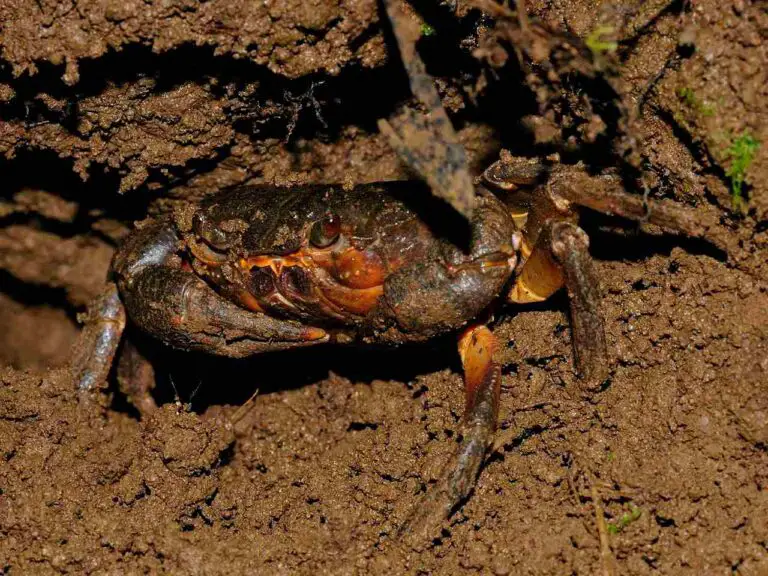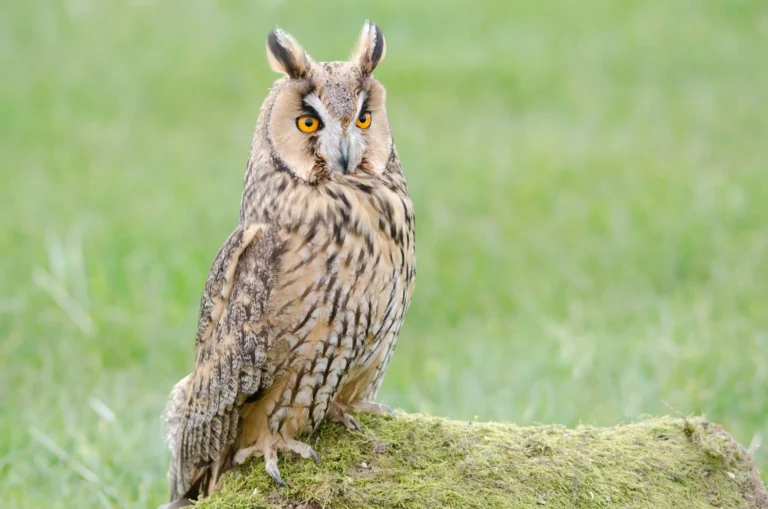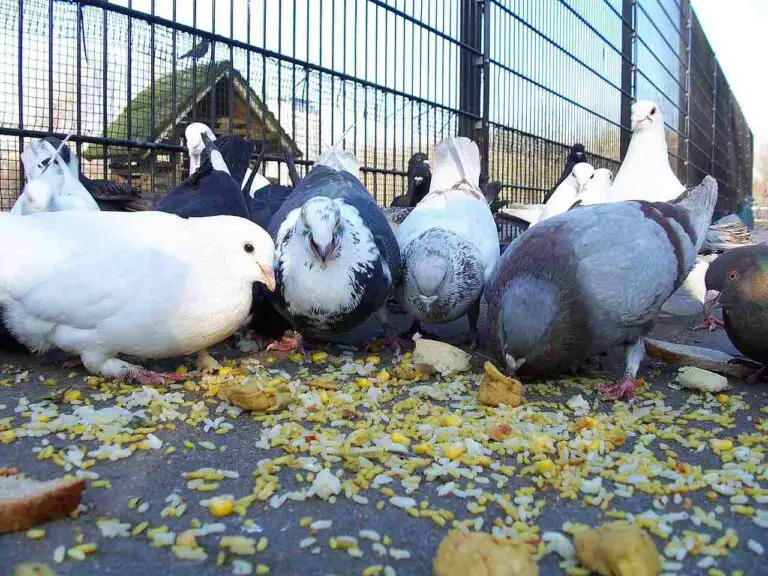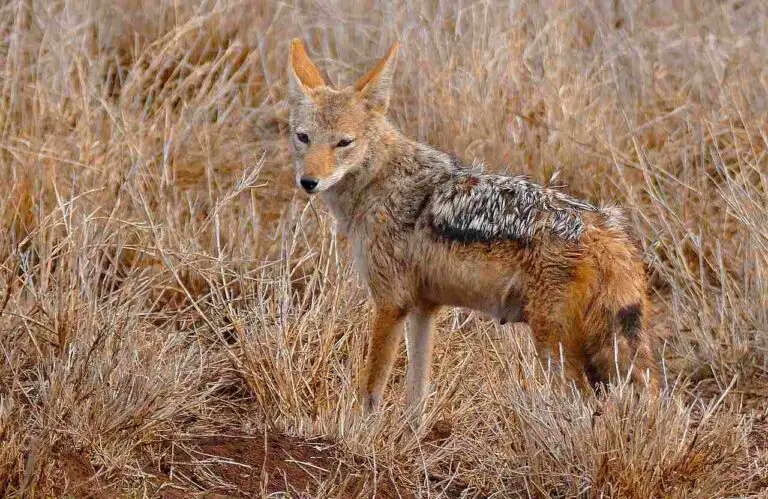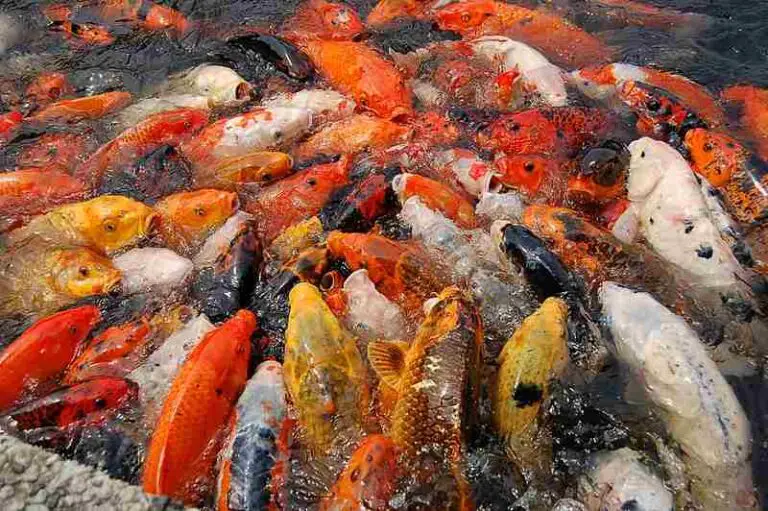Is a Giraffe a Consumer? The Ecologic Position of Giraffes Explained
A giraffe is a consumer in the food chain because it cannot synthesize its biomass or food, and relies on other organisms to serve as sources of energy and nutrients for it’s sustenance.
This article discusses the consumer role of giraffes.
Is a Giraffe a Producer, Consumer or Decomposer?
As mentioned earlier, a giraffe is a consumer. It does not have the ability to manufacture its own food through photosynthesis like plants do, nor does it play a role in the process of biodegradation. Instead, giraffes rely on other organisms, specifically plants, to provide them with the energy and nutrients they need to survive.
Giraffes are herbivores, meaning their diet consists solely of plant materials. They have long necks and tongues that allow them to reach high into trees and consume leaves, buds, and shoots. This specialized feeding behavior is a clear indication that giraffes are consumers, as they depend on producers (plants) for sustenance.
Furthermore, giraffes lack the typical biological features of producers. They do not possess chloroplasts or any other structures necessary for photosynthesis. Instead, their digestive systems are adapted to process plant matter, further emphasizing their role as consumers.
It’s important to note that giraffes are not decomposers either. Decomposers are organisms that break down dead organic matter and facilitate the process of biodegradation. Giraffes do not exhibit any behavioral attributes of decomposers. They do not scavenge for carrion or feed on decaying matter. Instead, they rely on fresh plant materials for their nutritional needs.
Why a Giraffe is Not a Producer
1. Giraffes are Not Autotrophic
Giraffes are not autotrophic, which means they are not capable of producing their own food through photosynthesis like plants do. Autotrophs, such as plants, algae, and some bacteria, have the ability to convert sunlight into energy and synthesize organic compounds. However, giraffes rely on external sources for their sustenance.
Giraffes are herbivores, meaning they feed exclusively on plant materials. Their diet mainly consists of leaves, buds, and shoots from trees and shrubs. They use their long necks and tongues to reach high branches and strip the leaves off. This feeding behavior clearly distinguishes them from autotrophs, as they depend on consuming producers for their energy needs.
In addition to their feeding habits, giraffes lack the typical biological features of autotrophs. They do not possess chloroplasts, the organelles responsible for photosynthesis in plants. Instead, their digestive system is adapted to process plant matter efficiently. Giraffes have a specialized four-chambered stomach that allows them to break down the tough cellulose found in plant cell walls.
Furthermore, giraffes do not have the ability to convert sunlight into energy or produce their own sugars. They must obtain the necessary nutrients and energy from the plants they consume. This further emphasizes their classification as consumers rather than producers.
2. They Feed on Producers
Giraffes are not producers because they feed on producers, such as trees whose leaves they browse on. This dietary behavior clearly distinguishes them from autotrophs, which have the ability to produce their own food through photosynthesis. Giraffes rely on consuming plant materials for their sustenance, making them consumers in the ecological context.
Giraffes are herbivores, meaning they exclusively feed on plant materials. Their diet mainly consists of leaves, buds, and shoots from trees and shrubs. They use their long necks and tongues to reach high branches and strip the leaves off. This feeding behavior further emphasizes their role as consumers, as they rely on consuming producers for their energy needs.
In addition to their feeding habits, giraffes lack the typical biological features of producers. They do not possess chloroplasts, the organelles responsible for photosynthesis in plants. Instead, their digestive system is adapted to process plant matter efficiently. Giraffes have a specialized four-chambered stomach that allows them to break down the tough cellulose found in plant cell walls.
Furthermore, giraffes do not have the ability to convert sunlight into energy or produce their own sugars. They must obtain the necessary nutrients and energy from the plants they consume. This further emphasizes their classification as consumers rather than producers.
By feeding on producers, giraffes play an important role in the ecosystem as herbivores. They help regulate plant populations by consuming vegetation, which can prevent overgrowth and maintain a balance in the ecosystem. Giraffes also serve as a food source for higher consumers, such as lions and hyenas, further highlighting their position as consumers in the food chain.
3. Giraffes Lack Typical Biological Features of Producers
Giraffes lack typical biological features of producers, such as leaves, roots, flagella, and chlorophyll. These characteristics are essential for plants to carry out photosynthesis and produce their own food. Unlike plants, giraffes do not possess chloroplasts, the organelles responsible for photosynthesis. Instead, their digestive system is adapted to efficiently process plant matter.
Giraffes have a specialized four-chambered stomach that allows them to break down the tough cellulose found in plant cell walls. This adaptation enables them to extract nutrients from the plant materials they consume. However, it also highlights their dependence on consuming producers for sustenance, further emphasizing their classification as consumers.
In terms of their physical structure, giraffes do not have leaves or roots like plants. Instead, they have long necks and tongues that enable them to reach high branches and strip leaves off trees. This feeding behavior is characteristic of herbivores, which rely on consuming plant materials for their energy needs.
Furthermore, giraffes do not possess flagella, which are whip-like structures found in some organisms that aid in movement. Instead, giraffes have long legs and a powerful musculoskeletal system that allows them to move gracefully across the savannah. This adaptation is more aligned with the locomotion of animals rather than the stationary nature of plants.
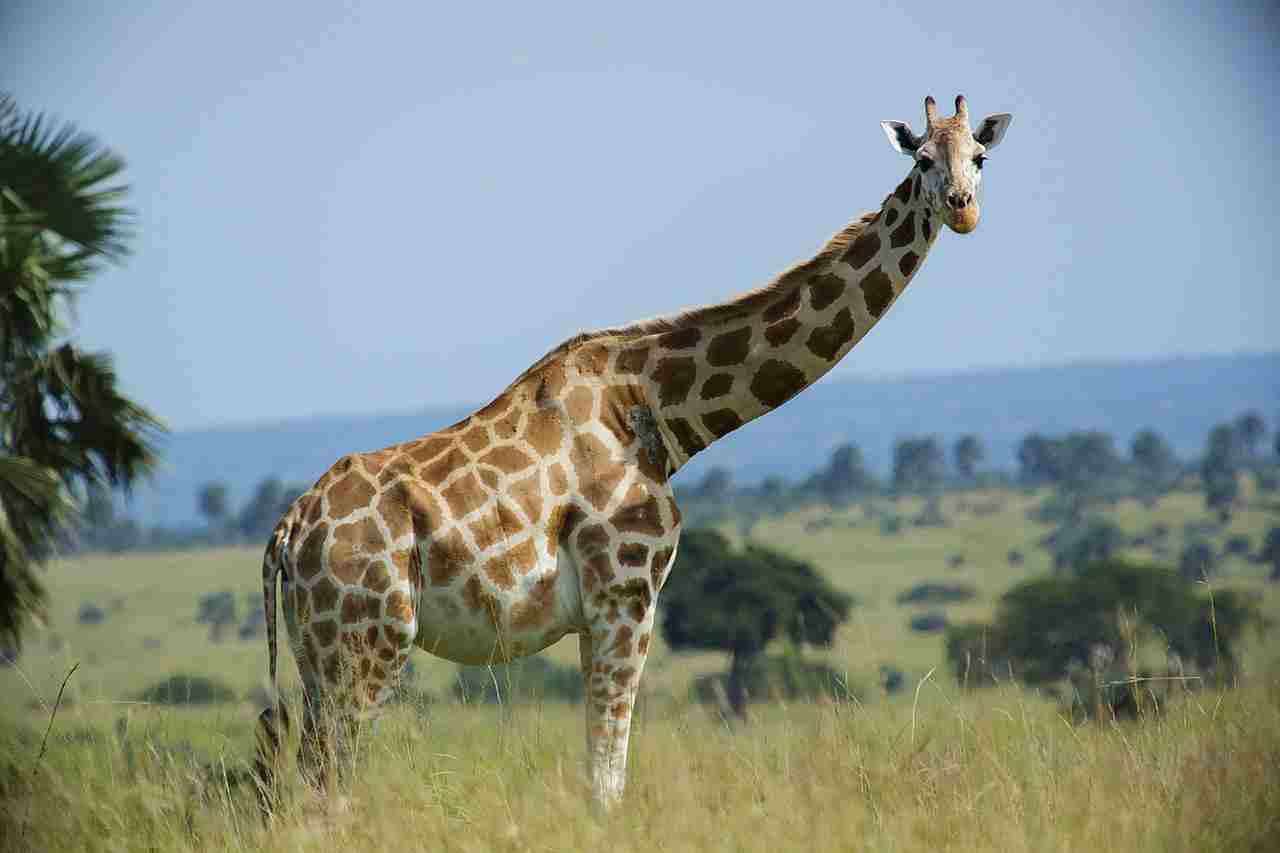
Why a Giraffe is Not a Decomposer
1. Giraffes are Not Saprophytic
Giraffes are fascinating creatures that roam the African savannah, but they are not saprophytic organisms. Saprophytic organisms are those that obtain their nutrients by decomposing dead organic matter. Giraffes, on the other hand, have a completely different dietary preference.
Giraffes are herbivores, which means they primarily feed on plant materials such as leaves, twigs, and fruits. They have long necks and tongues that allow them to reach high up into the trees to access their food. This unique adaptation sets them apart from saprophytic organisms, as they do not rely on decomposing matter for sustenance.
Unlike saprophytic organisms that break down dead organic matter, giraffes obtain their nutrients directly from living plants. They consume large quantities of vegetation to meet their energy and nutritional needs. This makes them an important part of the food chain as primary consumers.
Giraffes play a crucial role in maintaining the balance of ecosystems by consuming plant materials. They help control the growth of vegetation, preventing overgrowth and ensuring a healthy ecosystem for other organisms. Their feeding habits contribute to the dispersal of seeds, aiding in the reproduction and survival of various plant species.
2. Scavenging is Not a Behavioral Attribute of Giraffes
Another reason why giraffes are not decomposers is that scavenging is not a behavioral attribute of giraffes. Scavengers are organisms that feed on dead animals or carrion, playing a vital role in the decomposition process. However, giraffes do not exhibit this behavior.
Giraffes are herbivores, meaning their diet consists solely of plant materials. They do not actively seek out or consume dead animals. Instead, they rely on the abundance of vegetation available to them in their natural habitat. Their long necks and tongues are perfectly adapted for browsing on leaves and twigs, not for scavenging carcasses.
While giraffes may occasionally come across a carcass, they do not actively engage in scavenging behavior. Their primary focus is on finding and consuming plant matter to meet their nutritional needs. This further emphasizes their role as primary consumers in the food chain, as they rely directly on producers for sustenance.
3. Giraffes are Not Detritivorous
Another reason why giraffes are not decomposers is that they are not detritivorous. Detritivores are organisms that feed on dead organic matter, such as decaying plants and animals. However, giraffes do not possess the biological adaptations necessary for detritivory.
Giraffes are herbivores, meaning their diet consists solely of plant materials. They primarily feed on leaves, twigs, and other plant parts. Their long necks and tongues are perfectly adapted for browsing on vegetation, not for consuming decaying matter.
Unlike detritivores, giraffes do not actively seek out or consume dead organic matter. Their digestive system is designed to extract nutrients from plant materials, not from decomposing organisms. They lack the specialized enzymes and gut microbiota that detritivores possess to break down and digest decaying matter.
Instead, giraffes rely on the energy and nutrients obtained from consuming fresh plant matter. They play a crucial role as primary consumers in the food chain by directly relying on producers for sustenance. Their feeding habits contribute to the transfer of energy and nutrients from plants to higher-level consumers.
What Type of Consumer is a Giraffe?
A giraffe is classified as a herbivorous animal, meaning its diet consists solely of plant materials. As a result, giraffes are considered primary consumers in the food chain. They are also referred to as first-order consumers because they directly consume producers, which are plants in this case. Giraffes primarily feed on leaves, twigs, and other plant parts, using their long necks and tongues to browse on vegetation.
Unlike predatory or carnivorous animals, giraffes do not consume meat or actively hunt other animals. They are not omnivorous either, as their diet does not include a mix of plant and animal matter. Giraffes solely rely on plant materials for sustenance, making them specialized herbivores.
Giraffes play a crucial role in the ecosystem as primary consumers. They serve as a bridge between producers, such as trees and shrubs, and higher-level consumers. By consuming plant materials, giraffes contribute to the transfer of energy and nutrients from plants to other organisms in the food chain.
In terms of their ecological position, giraffes are essential for maintaining the balance of the ecosystem. Their feeding habits help control the growth of vegetation, preventing overgrowth and ensuring the survival of various plant species. Additionally, giraffes serve as a food source for higher-level consumers, such as lions and hyenas, further contributing to the intricate web of life in their habitat.
Are Giraffes Primary Consumers?
Yes, giraffes are considered primary consumers in the food chain. As mentioned earlier, giraffes have a herbivorous diet, meaning they primarily consume plant materials. This makes them specialized herbivores and places them in the category of primary consumers.
Giraffes solely rely on plant materials for sustenance, feeding on leaves, twigs, and other plant parts. Their long necks and tongues allow them to browse on vegetation, making them well-adapted to their herbivorous lifestyle.
Being primary consumers, giraffes play a crucial role in the ecosystem. They directly consume producers, such as trees and shrubs, and contribute to the transfer of energy and nutrients from plants to other organisms in the food chain.
Giraffes serve as a bridge between producers and higher-level consumers. By consuming plant materials, they help maintain the balance of the ecosystem and control the growth of vegetation. Additionally, giraffes serve as a food source for higher-level consumers like lions and hyenas, further contributing to the intricate web of life in their habitat.
Reasons Why Giraffes are Considered Primary Consumers
1. Their Diet Solely Comprises of Plant Materials
Giraffes are considered primary consumers because their diet solely comprises of plant materials. As primary consumers, they play a crucial role in the food chain by consuming producers, such as leaves, twigs, and fruits.
Giraffes have a unique feeding behavior known as browsing, where they use their long necks to reach high branches and leaves. Their diet mainly consists of leaves from trees and shrubs, which provide them with the necessary nutrients for survival.
Their digestive system is specially adapted to process plant materials. Giraffes have a four-chambered stomach that allows them to efficiently break down the cellulose found in leaves. This enables them to extract the maximum amount of nutrients from their food.
By consuming plant materials, giraffes obtain energy and nutrients necessary for their growth and survival. They rely on the abundance of producers in their habitat to meet their dietary needs. Without access to these plant materials, giraffes would not be able to sustain themselves.
Giraffes are herbivores, meaning they do not consume any animal products. Their diet is exclusively plant-based, which distinguishes them from other consumers that may include both plant and animal materials in their diet.
As primary consumers, giraffes occupy an important position in the food chain. They serve as a link between producers and higher-level consumers. Giraffes are prey for predators such as lions and hyenas, which are considered secondary or tertiary consumers. This makes giraffes an essential part of the ecosystem, contributing to the balance and dynamics of the food web.
2. Giraffes Have No Predatory Characteristics
When considering the ecological position of giraffes, it is important to note that they do not possess any predatory characteristics. Unlike carnivores, giraffes do not have a preference for consuming other animals. Instead, their diet solely consists of plant materials, making them herbivores.
One of the key factors that distinguishes predators from herbivores is their physical adaptations. Predators often have sharp claws and prominent canines that are specifically designed for capturing and killing prey. Giraffes, on the other hand, lack these features. Their long legs and necks are adapted for browsing on high branches, allowing them to reach leaves and twigs, but not for hunting.
Giraffes are not equipped with the physical attributes necessary for capturing and subduing prey. Their hooves are designed for walking and running, rather than for grasping or tearing. Additionally, their teeth are adapted for grinding and chewing plant materials, rather than for tearing flesh.
Furthermore, the behavior of giraffes does not align with that of predators. Predators typically exhibit hunting behaviors, such as stalking, chasing, and ambushing their prey. Giraffes, on the other hand, do not display any predatory behaviors. They are peaceful animals that spend most of their time peacefully grazing on leaves and twigs.
In terms of their ecological role, giraffes rely directly on producers for sustenance. They consume plant materials, such as leaves, twigs, and fruits, which are produced by trees and shrubs. By feeding on producers, giraffes contribute to the transfer of energy and nutrients through the food chain.
3. They Rely Directly on Producers for Sustenance
Giraffes rely directly on producers for sustenance, placing them in trophic level 2 above these producers. As herbivores, their diet consists solely of plant materials, such as leaves, twigs, and fruits. This means that they depend on the energy and nutrients provided by the producers in their ecosystem.
Producers, such as trees and shrubs, use photosynthesis to convert sunlight into energy-rich compounds like glucose. Giraffes, in turn, consume these plant materials to obtain the energy they need for survival and growth. By feeding on producers, giraffes play a crucial role in the transfer of energy and nutrients through the food chain.
When giraffes browse on leaves and twigs, they extract the stored energy and nutrients from the plant cells. These resources are then utilized by giraffes to fuel their bodily functions, including digestion, movement, and reproduction. In this way, giraffes directly rely on producers to meet their nutritional needs.
The relationship between giraffes and producers is mutually beneficial. Giraffes benefit from the energy and nutrients provided by the plants, while the plants benefit from the process of herbivory. When giraffes feed on leaves and twigs, they inadvertently help to shape the growth and development of the plants.
Giraffes have a unique feeding strategy that allows them to access food sources that are out of reach for other herbivores. Their long necks and tongues enable them to browse on leaves and twigs high up in the trees. This feeding behavior not only benefits giraffes but also helps to control the growth of vegetation in their habitat.
In addition to their direct reliance on producers, giraffes also indirectly contribute to the sustenance of other consumers in the ecosystem. As primary consumers, they serve as a food source for higher-level consumers, such as lions and hyenas. By occupying this position in the food chain, giraffes help to maintain the balance and stability of the ecosystem.
4. Giraffes Serve as Prey for Higher Consumers
Giraffes serve as prey for higher consumers, meaning they are primary consumers in the food chain. As primary consumers, giraffes occupy an important position in the ecosystem, acting as a vital link between producers and higher-level consumers. They play a crucial role in the transfer of energy and nutrients through the food chain.
Being primary consumers, giraffes rely solely on plant materials for their sustenance. Their diet consists of leaves, twigs, and fruits, which they obtain by browsing on trees and shrubs. By consuming these plant materials, giraffes extract the energy and nutrients stored within them, fueling their bodily functions and supporting their growth and reproduction.
Giraffes are not equipped with predatory characteristics, making them vulnerable to predation by higher-level consumers. Predators such as lions and hyenas view giraffes as a valuable food source. Their large size and slow movement make them an attractive target for these carnivores.
The fact that giraffes serve as prey for higher consumers highlights their position as primary consumers in the food chain. They are an essential part of the ecosystem, contributing to the balance and stability of the natural environment.
FAQs
1. Can a Giraffe be a Primary Consumer?
A giraffe can indeed be considered a primary consumer. In the food chain, primary consumers are organisms that directly consume producers, which are usually plants. Giraffes fit this definition perfectly as their diet consists solely of plant materials. They primarily feed on leaves, buds, and shoots from trees and shrubs in their habitat.
Giraffes lack the predatory characteristics typically associated with higher-level consumers. They do not possess sharp teeth or claws for hunting, nor do they exhibit predatory behaviors. Instead, they rely on their long necks and tongues to reach and consume vegetation. This further supports their classification as primary consumers.
Being primary consumers, giraffes rely directly on producers for sustenance. They obtain the necessary nutrients and energy by consuming plant matter. This makes them an integral part of the ecosystem, as they help regulate plant populations and contribute to nutrient cycling.
Additionally, giraffes serve as prey for higher-level consumers, such as lions and hyenas. Their position as primary consumers makes them vulnerable to predation, highlighting their role in the food chain.
2. What is a Giraffe in the Food Chain?
A giraffe plays a crucial role as a primary consumer in the food chain. As a primary consumer, a giraffe occupies a specific position in the ecosystem where it directly consumes producers, which are typically plants. This means that giraffes rely on vegetation as their primary source of food.
In the food chain, the primary consumers, like giraffes, are herbivores that feed on plants. Giraffes have a unique diet that consists mainly of leaves, buds, and shoots from trees and shrubs. Their long necks and tongues allow them to reach high branches and consume the vegetation that other animals cannot access.
Giraffes lack the ability to manufacture their own food, which is a characteristic of producers. Instead, they depend on the energy and nutrients obtained from the plants they consume. This reliance on producers for sustenance further solidifies their classification as primary consumers.
By consuming plant matter, giraffes contribute to the regulation of plant populations in their habitat. They help control the growth of certain plant species, preventing overgrowth and maintaining a balanced ecosystem. Additionally, as primary consumers, giraffes serve as a food source for higher-level consumers, such as lions and hyenas.
3. Is a Giraffe a Producer or Consumer?
A giraffe is classified as a consumer in the ecosystem. Unlike producers, such as plants, giraffes do not have the ability to manufacture their own food. Instead, they rely on consuming plant materials for their sustenance. This makes them dependent on producers for their energy and nutrient needs.
Giraffes have a unique diet that consists mainly of leaves, buds, and shoots from trees and shrubs. Their long necks and tongues allow them to reach high branches and consume vegetation that other animals cannot access. By feeding on plants, giraffes contribute to the regulation of plant populations in their habitat. They help control the growth of certain plant species, preventing overgrowth and maintaining a balanced ecosystem.
As primary consumers, giraffes serve as a crucial link in the food chain. They are herbivores that directly consume producers, which are typically plants. Giraffes lack the predatory characteristics of higher-level consumers and solely rely on plant materials for their sustenance. Their diet solely comprises plant materials, making them an important part of the ecosystem’s energy flow.
In the food chain, giraffes occupy a position where they rely directly on producers for their survival. They do not exhibit behaviors associated with decomposers, such as scavenging or detritivory. Instead, they play a vital role as primary consumers, consuming plant matter and serving as a food source for higher-level consumers, such as lions and hyenas.
4. Is a Giraffe a Producer, Consumer or Decomposer?
A giraffe is primarily a consumer in the ecosystem. Unlike producers, such as plants, giraffes do not have the ability to manufacture their own food. Instead, they rely on consuming plant materials for their sustenance. This makes them dependent on producers for their energy and nutrient needs.
Giraffes have a unique diet that consists mainly of leaves, buds, and shoots from trees and shrubs. Their long necks and tongues allow them to reach high branches and consume vegetation that other animals cannot access. By feeding on plants, giraffes contribute to the regulation of plant populations in their habitat. They help control the growth of certain plant species, preventing overgrowth and maintaining a balanced ecosystem.
In terms of decomposition, giraffes do not exhibit the characteristics of decomposers. They are neither saprophytic nor detritivorous. Saprophytic organisms obtain nutrients by decomposing dead organic matter, while detritivores feed on detritus, which includes dead plant and animal material. Giraffes, however, do not actively participate in the decomposition process.
As primary consumers, giraffes serve as a crucial link in the food chain. They are herbivores that directly consume producers, which are typically plants. Giraffes lack the predatory characteristics of higher-level consumers and solely rely on plant materials for their sustenance. Their diet solely comprises plant materials, making them an important part of the ecosystem’s energy flow.
In the food chain, giraffes occupy a position where they rely directly on producers for their survival. They do not exhibit behaviors associated with decomposers, such as scavenging or detritivory. Instead, they play a vital role as primary consumers, consuming plant matter and serving as a food source for higher-level consumers, such as lions and hyenas.
Overall, giraffes are best classified as consumers in the ecosystem due to their reliance on consuming plant materials for their energy and nutrient needs. They contribute to the regulation of plant populations and serve as an important link in the food chain.
5. Is a Giraffe a Herbivore?
A giraffe is indeed a herbivore, meaning it primarily eats plant matter. This makes them an important part of the ecosystem as they contribute to the regulation of plant populations. Giraffes have a unique diet that consists mainly of leaves, buds, flowers, shoots, and fruits that are out of reach for typical grazers like buffaloes. Their long necks and tongues allow them to reach high branches and consume vegetation that other animals cannot access.
Giraffes are well-adapted to their herbivorous diet. Their long necks and legs enable them to browse on tall trees, while their prehensile tongues help them strip leaves from branches. They have specialized teeth and a digestive system that allows them to efficiently process plant material.
As herbivores, giraffes play a crucial role in maintaining the balance of the ecosystem. By consuming plant matter, they help control the growth of certain plant species, preventing overgrowth and ensuring a diverse range of vegetation. This, in turn, supports the survival of other herbivores and the predators that rely on them.
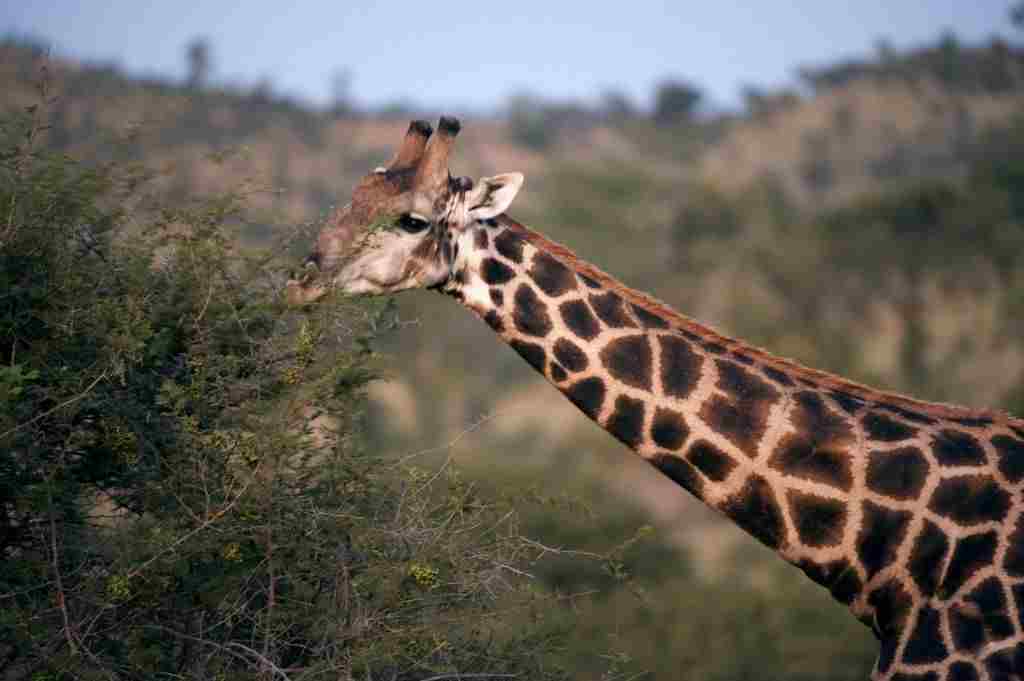
6. What do Giraffes Eat?
Giraffes have a unique and specialized diet, primarily consisting of leaves, buds, flowers, shoots, and fruits that are out of reach for typical grazers like buffaloes. Their long necks and tongues allow them to reach high branches and consume vegetation that other animals cannot access. This makes them an important part of the ecosystem as they contribute to the regulation of plant populations.
Giraffes are well-adapted to their herbivorous diet. Their long necks and legs enable them to browse on tall trees, while their prehensile tongues help them strip leaves from branches. They have specialized teeth and a digestive system that allows them to efficiently process plant material. This enables them to extract the necessary nutrients from their food source.
As herbivores, giraffes play a crucial role in maintaining the balance of the ecosystem. By consuming plant matter, they help control the growth of certain plant species, preventing overgrowth and ensuring a diverse range of vegetation. This, in turn, supports the survival of other herbivores and the predators that rely on them.
Giraffes primarily feed on leaves, which provide them with the majority of their nutritional needs. Leaves are rich in fiber, minerals, and vitamins, which are essential for their growth and overall health. They also consume buds, flowers, shoots, and fruits when available, adding variety to their diet and ensuring they receive a wide range of nutrients.
The ability of giraffes to feed on vegetation that is out of reach for other animals allows them to occupy a unique ecological niche. They can access food sources that are untouched by other herbivores, reducing competition for resources. This specialization in diet and feeding behavior has allowed giraffes to thrive in their natural habitats.
7. How is a Giraffe a Consumer?
A giraffe is considered a consumer because it obtains its energy and nutrients by feeding on other organisms, specifically plants. As an herbivore, the giraffe’s diet consists solely of plant materials, such as leaves, buds, flowers, shoots, and fruits. By consuming these plant materials, the giraffe relies directly on producers for sustenance, making it a primary consumer in the food chain.
Giraffes play a crucial role in the ecosystem as primary consumers. Their unique ability to browse on tall trees using their long necks and prehensile tongues allows them to access vegetation that other animals cannot reach. This specialized feeding behavior reduces competition for resources and enables giraffes to occupy a unique ecological niche.
The giraffe’s diet primarily consists of leaves, which provide them with the majority of their nutritional needs. Leaves are rich in fiber, minerals, and vitamins, essential for the giraffe’s growth and overall health. Additionally, giraffes consume buds, flowers, shoots, and fruits when available, adding variety to their diet and ensuring they receive a wide range of nutrients.
Being a primary consumer, giraffes serve as prey for higher consumers in the food chain. Their presence and abundance in an ecosystem support the survival of predators that rely on them for food. This interdependence between giraffes and their predators further highlights their role as consumers in the ecosystem.
8. Where are Giraffes in the Food Chain?
Giraffes are positioned directly above producers in the food chain, placing them in the second trophic level. As primary consumers, giraffes rely on plants as their main source of energy and nutrients. They consume leaves, buds, flowers, shoots, and fruits, obtaining sustenance directly from producers. This places them in a crucial position within the food chain, as they serve as a link between plants and higher-level consumers.
In the food chain, producers, such as plants, are at the bottom. They convert sunlight into energy through photosynthesis, creating organic matter that serves as the foundation for all other organisms. Giraffes, as primary consumers, feed on these plants, obtaining the energy and nutrients they need to survive. By consuming plant materials, giraffes transfer the energy from the producers to themselves.
Being positioned directly above producers in the food chain, giraffes play a vital role in maintaining the balance of ecosystems. They regulate the population of plants by consuming them, preventing overgrowth and ensuring the survival of other organisms that depend on these plants. Additionally, giraffes serve as a food source for higher-level consumers, such as lions and hyenas, further contributing to the intricate web of life within the food chain.
Understanding the position of giraffes in the food chain helps us appreciate their ecological significance. As primary consumers, they are essential for the flow of energy and nutrients through ecosystems. By consuming plants, giraffes not only sustain themselves but also contribute to the overall health and stability of their habitats.
Conclusion
* In conclusion, it is clear that giraffes are not producers or decomposers.
* They do not possess the necessary biological features or behaviors associated with these ecological roles. Instead, giraffes are primary consumers, relying solely on plant materials for sustenance.
* They play a crucial role in the food chain, serving as a link between producers and higher-level consumers.
* By consuming plants, giraffes transfer energy and nutrients through ecosystems, contributing to the overall health and stability of their habitats.
